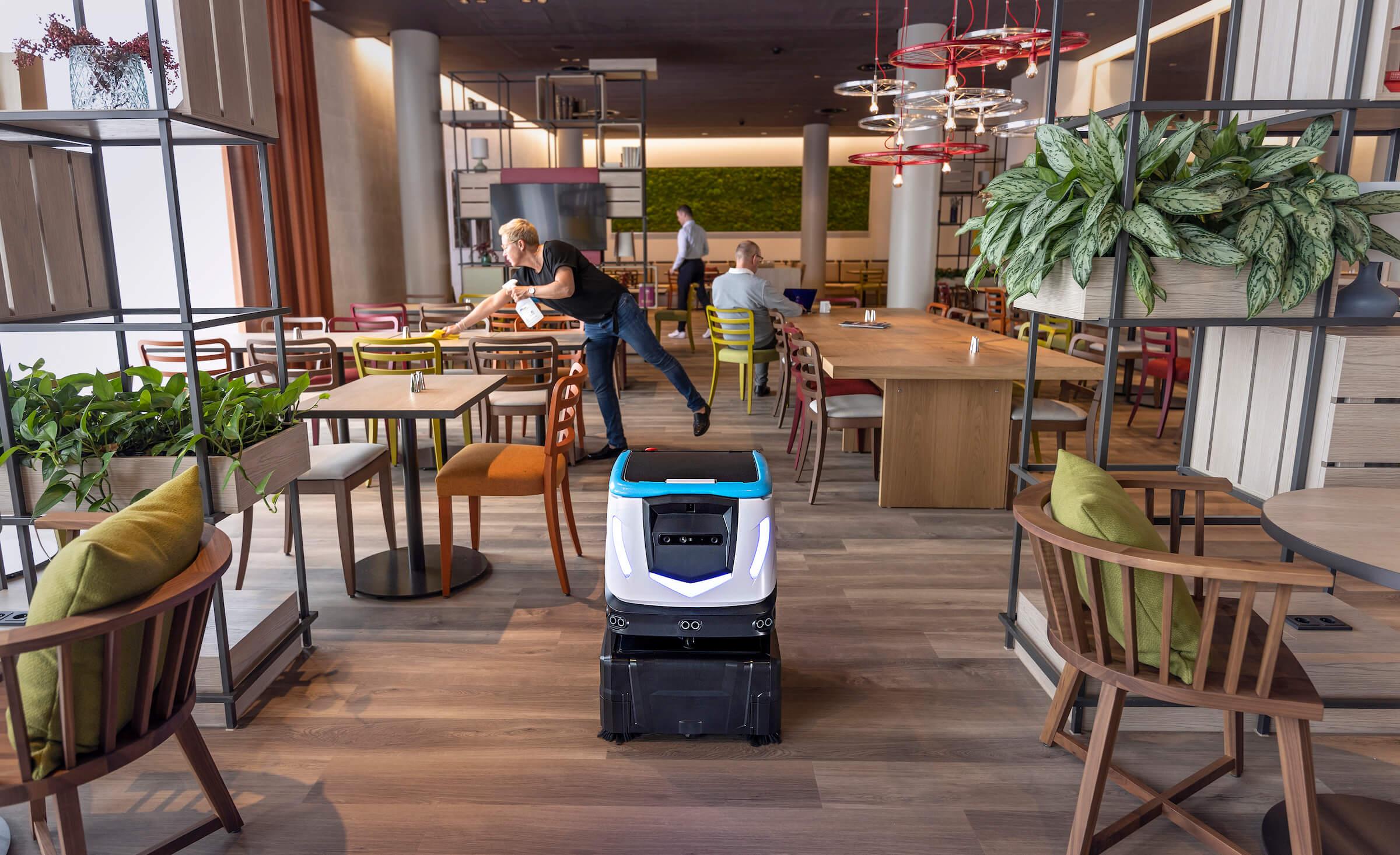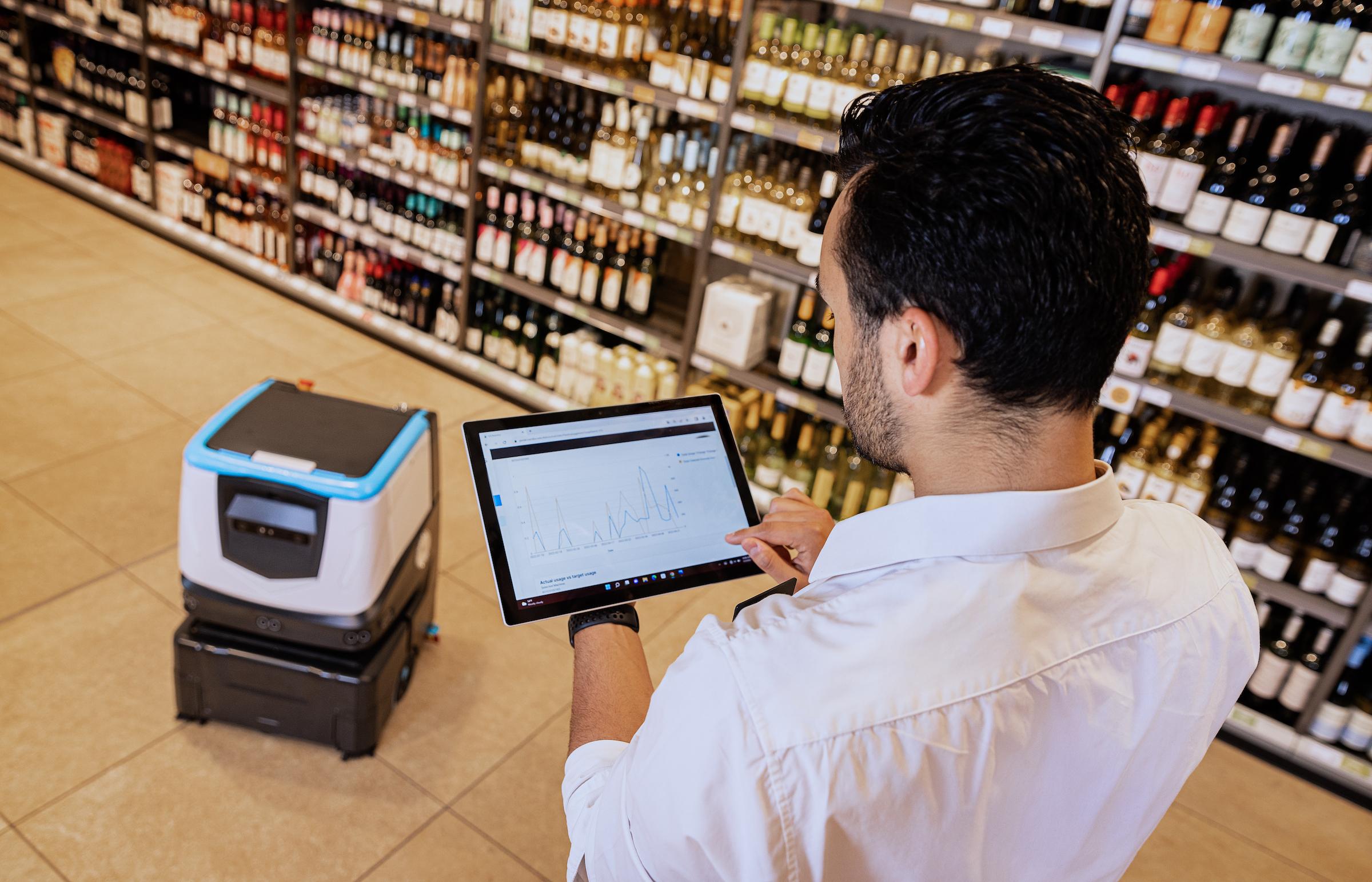May 16, 2022
How to Successfully Implement Autonomous Cleaning Solutions


As technology continues to evolve and businesses work to offset labor and inventory issues, relying on the consistent and efficient work of robotics is becoming a necessary solution.
However, before diving in headfirst, there are some steps employers and businesses should take when setting out to determine if they are a good robotics candidate.
Perhaps one of the most important items on the list is preparing your staff.
There can be negative connotations associated with the idea of bringing on robots, so getting ahead of these stigmas is important.
Providing your team with an introduction to robotics ahead of bringing on the equipment can help put minds at ease.
Brian Hughes, in an editorial for Automation News, points out that employees often see the idea of AI adoption as leading to the elimination of jobs. However, when you explain to employees that autonomous solutions like cobots (collaborative robots) are there to support staff it can make more sense.
Hughes suggests emphasizing the ideas behind adding automation such as the ability to free up staff to focus on customers, learning new skills, and focusing on other high priority tasks.
“I see positioning AI tools as a strategy for improving productivity and opening up job opportunities for employees as a necessary factor for successful implementation.”

Another way to look at it is with the term cobot, or collaborative robot.
These autonomous solutions are designed to work alongside staff to help them tackle daily tasks. So, they are not only a solution for labor shortages, but they are a solution to aid staff too, as cobots take on repetitive tasks so staff can focus on more detailed and high-priority tasks.
Providing training is another good way to help staff adjust. Most equipment providers have training programs that are easy to use and easily accessible.
For example, ICE Cobotics, a cleaning technology and solutions company, has a virtual resource center that provides tutorials for each of their machines, as well as brochures and manuals that can easily be accessed by anyone.
Training staff not only helps them to feel more comfortable working with cobots, but it also gives them the chance to learn a new skill.
In addition, overseeing and deploying a cobot is a great way to give an employee a sense of ownership and more responsibility—something many employees want from a job.
Of course, when it comes to deploying floor cleaning cobots, you will want to make sure you find the right machine for your floor type. Carpeted floors typically require an autonomous vacuum sweeper, and hard surface floors require an autonomous scrubber to get the desired results.
Bringing on autonomous solutions is not as simple as procuring the robot and deploying it in an office or retail environment. Just as it is important to prepare employees ahead of time, it is important to assess the physical environment too.
The technology used in autonomous solutions is continuously developing and most of the autonomous cleaning, inventory scanning, and warehouse product movement robots have very sophisticated navigation systems.
These machines can navigate real-world environments and avoid obstacles. ICE Cobotics’ autonomous scrubber, Cobi 18, for example, uses VSLAM technology like what Tesla uses in their self-driving cars.
The AI is highly sophisticated and uses a combination of cameras and sensors. Cobi 18 can even navigate safely around mirrors, through bright light, and in the dark.
The issue has less to do with the navigation and more to do with the layout of your facility in terms of making effective use of the machines.
For optimal usage and benefit to staff, it is important to make sure “unintended” obstacles are picked up before deployment of the robot.
For example, in retail locations this can mean a quick scan of aisle ways to remove fallen goods. In office settings this can mean making sure chairs are pushed in and trash and waste receptacles are lifted off the floor or in their typical spot.
Too many items left in the robot's path can cause it to have to stop and adjust, slowing down its progress and interfering with efficiency.
It is important to remember that autonomous solutions need staff to support them, just as staff need the cobots support. Training staff to prepare the route for the cobot will go a long way towards making the implementation of autonomous solutions easier in your facility.
This is a “get the most bang for your buck” scenario. Evaluating the work that is done in your facility and determining what tasks should be handled by your staff is crucial to the successful deployment of cobots.
For example, the ability to upgrade your customer service could expand when using cobots. Deploying a cobot to clean the floors relieves staff from worrying about checking that task off the list.
Instead, they can spend their time building relationships with customers and making sure customer needs are met. This can have a remarkable effect on business as good experiences drive customers to become loyal patrons.
Floor cleaning can be automated due to the repetitive nature of the work. Deploying cobots, like Cobi 18, an autonomous scrubber, can free up staff to focus on customers and other daily tasks while the floors are being cleaned by the cobot.
Embracing autonomous solutions and innovation throughout the company is crucial to make implementation successful, for a few reasons:
As TechRepublic notes “Businesses need to begin adopting AI technologies to help them do work, or risk being left behind.”
Up until fairly recently, investing in autonomous solutions was costly and prohibited many businesses from making the change.
However, the technology that is used to navigate autonomous solutions like Lidar and ultrasonic sensors and 3D cameras have become more affordable.
And they note, “The demand for mobile computing has been a boon for robotics development, leading to falling prices, rapid advances, and miniaturization of sensor technology.”
Still, it is important to evaluate your budget ahead of time to help determine where cobots will be the most beneficial, where they may offset labor costs, and to plan for service and repairs along the way.
In addition, exploring financing can open up unexpected possibilities. For example, ICE Cobotics offers their autonomous solutions through an all-inclusive subscription. This is an important financial solution to consider for many reasons.
A. With the ICE Cobotics all-inclusive subscription, service and support are offered throughout the duration of the contract. This alone can have many cost savings benefits because if a cobot needs servicing, it is covered with the subscription.
Part of budgeting means planning for service and repairs. If an equipment provider does not cover this, your business will need to plan to cover these costs. While we can hope machines will not malfunction, at the end of the day, this is a reality for all equipment.
B. Paying for an autonomous machine outright can deplete cash on hand and have an impact on company cash flow. With ICE Cobotics’ subscription, there are multiple plans designed to meet a variety of business needs.
Plus, monthly payment options are predictable and help to keep cash on hand for other business expenses or future job bidding.
C. Lastly, ICE Cobotics’ all-inclusive subscription includes their fleet management technology i-SYNERGY plus, any updates that come through. Many equipment providers charge extra for this service and technology, and it can be costly.
The data collected through software like i-SYNERGY can be invaluable, so having it included with the subscription is an added benefit.
Through this offer, ICE Cobotics has made it affordable and easy for businesses to bring on autonomous cleaning solutions, making it a simple and safe way to make the shift.
One of the benefits of using robots is the data tracking technology. Robots are a part of the IoT or Internet of Things—a complex system of cloud-based technology that works through cellular and wireless networks and stores data.
ICE Cobotics’ has their own patented fleet management system, i-SYNERGY a fleet management software, that captures the data collected by the cobot.
This system tracks where the cobot cleans, how often it runs, the duration of time it runs, and even who uses the machines.
This kind of data can help managers and end users to streamline processes and to work with employees to create better protocols or plans for tackling tasks each day.
This can have a significant impact on how your business manages workflow.

Being prepared to evaluate the data and implement change is necessary to the overall successful implementation and to positively impact the bottom line.
Preparing staff ahead of time for this and working with them along the way can help make business procedures run more smoothly and efficiently and can make the transition to using cobots simple.
In general, bringing on cobots, or autonomous machines, can improve working conditions and offset labor issues, plus improve productivity and efficiency. Making sure the business is ready and set up for these changes is a key step to improving business operations.
For more information, reach out to our service team! They are happy to help!
Ready to Explore Automation? Talk to an Automation Expert